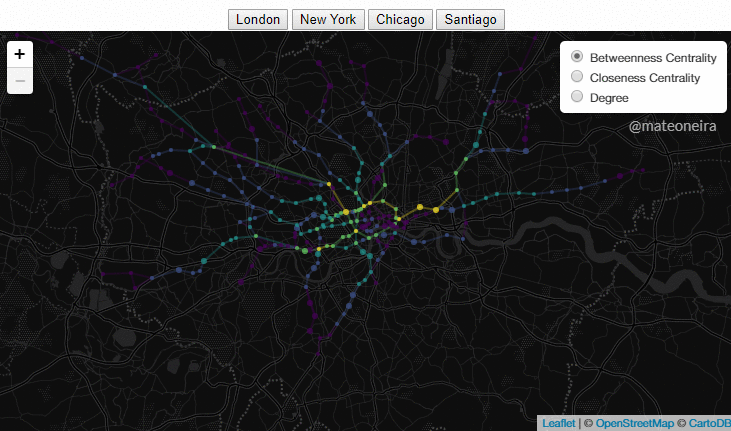Hey! I’m Mateo, an Associate Partner and Data Scientist at Foster and Partners. I also hold an Honorary Research Fellowship at UCL, stemming from my PhD at the Centre for Advanced Spatial Analysis, as part of the Alan Turing Institute doctoral program, where my research focused on quantifying urban segregation and human behaviour in cities using advanced network analysis and information theory.
At Foster and Partners, I’ve led the design, development, and deployment of data-driven and machine learning initiatives that influence urban design and analytics. My contributions have resulted in actionable insights and production-grade tools, which have been showcased at international conferences. Previously, I also worked at SignalBox developing algorithms for transport networks.
My current work is at the intersection of Complex Networks, Data Science, and Machine Learning, specifically applied to the modeling of social and urban systems. I am passionate about designing, building, and deploying robust AI/ML solutions to address complex urban challenges, transforming sophisticated data analysis into scalable and actionable insights for sustainable urban development.
You can find my full resume here.
PROJECTS
Analyzing Transport Networks
Interactive Web tool to explore centrality measures of the metro systems of London, New York, Chicago, and Santiago de Chile. The time-weighted graphs were constructed using publicly available GTFS data and visualized using javascript. Click on the image to view the tool, along with a more indepth description.

placeSpace
placeSpace is an interactive online platform that enables users to visualize and explore amenity location and distribution in London. The platform originates from the need to interpret and assess the complexity of cities in terms of agglomeration economies.
urbanPulse
Our collective activities in the city unfold in time and space in a repeating fashion. These cyclic patterns of actions and interactions create a particular rhythm, an urban ‘Pulse’ influenced by socio-cultural and physical aspects of our environment.
Increasingly people use online networks to interact, and even though these interactions are virtual, they take place in physical space. By retrieving the digital traces they leave behind we can visualize these cyclic spatio-temporal patterns in a city.